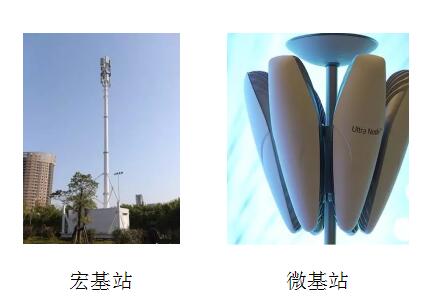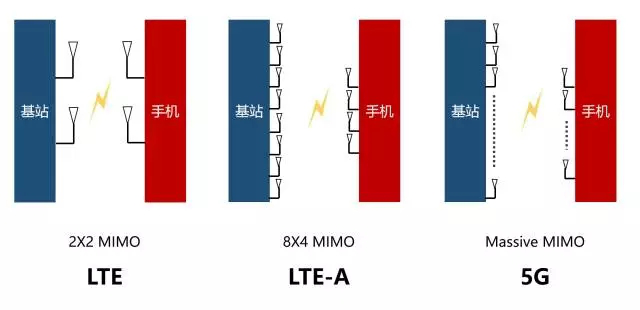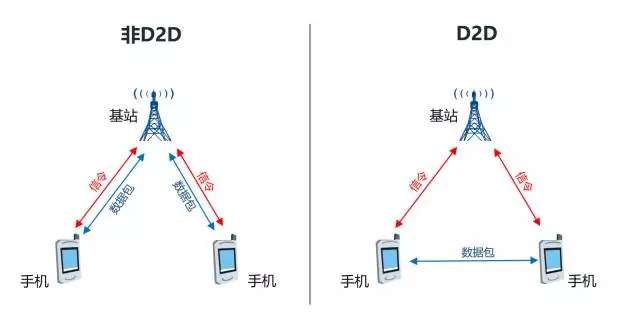Electromagnetic waves are divided into radio waves and light waves. Electromagnetic wave frequency resources are limited, according to different frequency characteristics, have different uses. We currently use radio waves to communicate. Of course, light communication is also rising, such as visible light communication LiFi (LightFidelity).
Segmentation of radio waves:
|
name |
symbol |
frequency |
Band |
wavelength |
main purpose |
|
Base low frequency |
VLF |
3-30KHz |
Super long wave |
1000Km-100Km |
Coastal submarine communications; long distance communication; ultra remote navigation |
|
Low frequency |
LF |
30-300KHz |
Long wave |
10Km-1Km |
Transit communication; Middle distance communication; Underground rock communication; Long distance navigation |
|
IF |
MF |
0.3-3MHz |
In the wave |
1Km-100m |
Marine communication; amateur radio communication; mobile communication; medium distance navigation |
|
high frequency |
HF |
3-30MHz |
shortwave |
100m-10m |
Long - range short - wave communication; international fixed - point communication; mobile communication |
|
Base high frequency |
VHF |
30-300MHz |
Rice wave |
10m-1m |
Ionospheric scattering; meteor astronomical communication; artificial ionospheric communication; spaceflight communication; mobile communication |
|
UHF |
UHF |
0.3-3GHz |
Minimeter wave |
1m-0.1m |
Small-capacity microwave relay communication; tropospheric scatter communication; medium-capacity microwave communication; mobile communication |
|
Special high frequency |
SHF |
3-30GHz |
Centimeter waves |
10cm-1cm |
Large-capacity microwave relay communication; high-throughput microwave relay communications; digital communications; satellite communications; international maritime satellite communications |
|
Very high frequency |
EHF |
30-300GHz |
Millimeter wave |
10mm-1mm |
Reentry communication in the atmosphere; waveguide communication |
5G technology has five major characteristics:
一、 millimeter wave
A significant feature of electromagnetic waves: the higher the frequency (the shorter the wavelength), the closer to the linear propagation (the worse the diffraction capability), and the higher the frequency, the greater the attenuation in the propagation process.
E.g:
1、laser pen, the wavelength of 635nm or so, the light is straight, blocking the hard to get through.
2、satellite communications and GPS navigation, wavelength 1cm or so, if there is a block, no signal. Moreover, the satellite that cauldron, must be aimed at the direction of the satellite, a little crooked, will have an impact.
If the 5G with high-frequency, then its biggest problem is that the ability to cover will be greatly reduced. Covering the same area, the number of base stations required will be much higher than 4G. So these years, telecommunications, mobile, China Unicom to fight for the low frequency band, some bands even called - gold band.
二、micro base station
In the high frequency of the premise, in order to reduce the cost of coverage costs, 5G must find a new way first, is the micro base station. There are two kinds of base stations, micro base stations and macro base stations. The smaller the base station, the more the number, the better the coverage, the faster the speed.

三、Massive MIMO
MIMO is the "Multiple Input Multiple Multiple Output", multiple antennas are sent, and multiple antennas are received. In the LTE era has been MIMO, 5G continue to carry forward, into the enhanced version of Massive MIMO.

四、 beam forming
The antenna array is arranged on the base station. By controlling the phase of the RF signal, the lobes of the electromagnetic waves after the interaction become very narrow and point to the mobile phones it provides, and can change the direction according to the movement of the mobile phone. This space reuse technology, from the omnidirectional signal coverage into a precise directional service, the beam will not interfere with the same space to provide more communication links, greatly improving the base station's service capacity.
五、D2D
5G era, the same base station under the two users, if they communicate with each other, their data will no longer forward through the base station, but direct mobile phone to the phone. In this way, Harvatek saved a lot of air resources, but also reduce the pressure on the base station.

- Auto power components market prospect
- Jianjun 90 years, inventory of military semiconductor business
- Apple Airpower: phone / table / headset can be wireless power charger
- Bluetooth module working principle and module classification
- From 4G to 5G, look at the phone antenna cover position and process changes
- Discussion on Adaptive Motion Control Technology of Industrial Robot
- How to use "Internet +" to improve our living environment